Soviet Jewry’s leading man has had a career of many acts: dissident, politician and now, head of Israel’s Jewish Agency. Through them all, he has held on to his belief in peoplehood, an idea he thinks can cure what ails the Jewish world.
It is a cold night in Washington, DC, and Natan Sharansky is doing what he has done for years, speaking to a group of American Jews, this time participants in a Reform movement conference. He is sick—his eyes are bloodshot and he looks paler than usual—but the crowd listens attentively as he touches upon subjects ranging from Russian Jewry to Jewish unity, arms gesticulating wildly. He rambles—he rarely uses notes—and although his English is fluent, it can be difficult to follow because of his thick Russian accent. No matter that he seems tired, even dour. The applause is loud when he stops speaking.
Sharansky is 64 now. It has been 26 years since the Jews of the West rallied together to pressure the Soviet Union to release him from the Gulag. The world has changed—the communist behemoth has vanished from the geopolitical map, replaced by a contentious Russia and a motley array of 15 republics. Its Jews are scattered throughout the U.S., Europe and Israel, with those who remain free to go, leaving the Jewish world without a cause that transcends its differences. And Sharansky—the public face of Soviet Jewry who stared down his oppressors and emanated charisma—is no longer the boyish man of seemingly endless energy. His 5-foot-3-inch frame has filled out, the skin surrounding those intense eyes is slightly puffy, and what’s left of his hair has grayed at the temples. Although he is hardly physically imposing, there remains something monumental about him. Nine years in a Soviet prison and labor camps—including some 400 days in solitary confinement and 200 or so not eating—stay with a man.
After a decade in Israeli politics, three books and a stint at a neoconservative think tank, he is now the director of the Jewish Agency for Israel, the organization founded in 1929 that brings Jews to Israel, absorbs them and teaches them Hebrew. Until 1948, it was the de facto government of Israel, and its bloated bureaucracy is legendary. This might seem like an odd job for a man of superhero proportions, a man who, upon his release, was so respected that he had his choice of far more visible and highly paid positions and was one of four non-U.S. citizens to be awarded both the Presidential Medal of Freedom and the Congressional Gold Medal (the others are John Paul II, Mother Teresa and Nelson Mandela).
But Sharansky, who took over the Agency in 2009, tells me that he has come full circle. “This is the job I’ve been preparing for all my life,” he has said.
It all goes back to the moment when, as a young man struggling against the Soviet Union, he realized he was part of the Jewish people. “All of a sudden, I was connected to something bigger than simple physical survival,” he says. “So when they began arresting me or telling me that they would take my life if I didn’t cooperate with them, I didn’t compromise. But you can only do this if you’ve discovered something that is more important than your physical survival. And that is identity,” he adds, “or as we call it, ‘peoplehood.’”
And peoplehood, he believes, is that magical ingredient that can cure what ails the Jewish world today.
Born in 1948 in Donetsk, then known as Stalino, a city of about 50,000 Jews without a single synagogue, Anatoly Borisovich Scharansky was raised in a family of Soviet Jews that was, as he describes it, “assimilated by force.” Like many Jews of his generation, his father had hoped that the Russian Revolution would put an end to discrimination against Jews. And though he was bitterly disappointed, he taught his son early on that being Jewish was “nothing to be ashamed of, which was an important lesson in a society where well-bred people considered it vulgar to use the word ‘Jew’ in the presence of a Jew,” Sharansky writes in his 1988 memoir, Fear No Evil.
Like many of his fellow Jews in the Soviet Union, he felt a secret pride in his ancestry but knew little about his religion or culture except that, as a Jew, he was subject to state-sanctioned anti-Semitism. It meant that the young chess prodigy needed to outperform other Russians and not just succeed but excel. “To go to the world of science, or to the world of arts, or to be a good chess player, or to be a good musician, to be somebody where your profession can protect you, it can make you more valuable,” he has said.
It was a lesson the young Sharansky internalized early on: At age 14, he was the chess champion of Stalino, and his high grades in school earned him a coveted place at the prestigious Moscow Physical Technical Institute, where he went on to study cybernetics and the ways in which computers could be programmed to play chess. (Decades later, he would beat chess champion Gary Kasparov in Israel.) It was then that he first felt the pull of Zionism. Like many in his generation, the Six Day War made a deep impression on him despite the anti-Israel propaganda of the Soviet regime. It was a revelation for him to discover that there was a Jewish world beyond the borders of the Soviet Union. “After 1967, we wanted to understand why the world connects us to Israel, and we started reading underground books brought by American Jewish tourists,” says Sharansky, recalling how Leon Uris’s Exodus especially stirred him.
In 1972, Sharansky took a position as a computer specialist at the Institute for Oil and Gas in Moscow. A year later, inspired by his new sense of identity, he did what until then had been largely unthinkable: He applied for an exit visa in the hopes of migrating to Israel. Sharansky’s request was denied on “security grounds.”
Together with other “refuseniks,” the term for Soviet citizens (often Jewish) who were refused permission to emigrate, Sharansky—now known as Natan to his fellow Jewish activists—attended underground Hebrew classes and meetings
at which participants discussed their various disciplines—mathematics, physics, engineering—as well as more existential questions of identity, culture and religious legacy. Sharansky, outgoing and charismatic, was a leader in the group from early on.
“The moment I found my identity and my roots, the moment I felt that there is a long history behind me, it became the first source of strength to speak my mind openly.”
His refusenik status opened the door to romance. No sooner had he thrown himself fully into the life of an activist than he met Natasha Stieglitz. Her brother had recently been arrested, and when she went to a Moscow synagogue looking for help, she was directed to Sharansky. He invited her to join him at his underground Hebrew lessons, and a month later, she moved into his apartment. “From the day we met I felt we were kindred spirits, destined to be together, and I was transformed,” he writes in Fear No Evil. “I saw her as a sign from God that—although back then I wouldn’t have phrased it in those terms—I was on the right path and that this new life I had recently entered into was my true destiny…Those were the best days of my life. I had so much—love, a cause, and a community. All I lacked was an exit visa.”
But a visa for Avital, as Natasha is now known, was granted. It was only good for a week, so the couple quickly arranged a religious wedding—their application for a civil one was denied—and the morning after, she was on a flight to Israel. “Next year in Jerusalem,” they vowed before she left. They were young, in love and hopeful that Sharansky’s visa would come soon after as part of the Soviet regime’s family reunification policy. But that was not to be: A dozen years would pass until they embraced again. “Sorry I’m a little late,” were the first words he would whisper into her ear.
Not long after, in 1974, Peter Osnos, then a reporter for The Washington Post, arrived in Moscow and met Sharansky. Already a fluent English speaker, Sharansky was the de facto spokesperson for the refusenik movement and a good source for foreign journalists. The two men developed a deep friendship. “Not many people had the bravery to spend time with me,” says Osnos.
There was much to be afraid of, but Sharansky didn’t take heed. Not only was he the go-to guy for Jewish activists, he was the translator for physicist and Nobel Peace Prize winner Andrei Sakharov, which thrust him into the heart of the largely non-Jewish Russian human rights movement. He “had a foot in each of these camps,” says Gal Beckerman, the author of When They Come for Us, We’ll Be Gone: The Epic Struggle to Save Soviet Jewry. “He occupied a unique position, was very visible and had a very wide network.”
At a press conference in Sakharov’s apartment, Sharansky helped launch the Helsinki Watch Group, an NGO that monitored the Soviet government’s adherence to the 1975 Helsinki Final Act. The group, which later evolved into Human Rights Watch, collected information from across the Soviet Union and published reports looking at issues ranging from the expulsion of Catholic boys from a school in Vilnius, Lithuania, to the meager diets of Soviet prisoners.
Sharansky’s prominent role was not without consequence: KGB agents followed him constantly—in elevators, down stairwells, on public buses and even in his own taxi (in which case Sharansky insisted that they split the fare). He was finally arrested in March of 1977 and charged with treason and spying for the United States. One of the charges against him stemmed from his relationship with Osnos. “Our friendship turned out to be instrumental in his trial and imprisonment,” Osnos recalls. “Rather than expelling me as a spy, they used my connection to Sharansky as a pretext. They decided they wanted to bust up a group of dissidents, and so they made an example of Natan and a few others who were particularly visible and effective.”
Sharansky faced the death penalty, but, with typical fearlessness, served as his own defense attorney. The trial was closed, but journalists and supporters waited outside the courthouse. He was found guilty in 1978, and the sentence was crushing: 13 years of forced labor in Perm 35, one of the chain of Siberian camps known as the Gulag. “For more than 2,000 years, my people have been dispersed,” Sharansky said to a silent courtroom after his sentencing. “But wherever they are, wherever Jews are found, every year they have repeated ‘next year in Jerusalem.’ Now, when I am further than ever from my people, from Avital, facing many arduous years of imprisonment, I say, turning to my people, my Avital: Next year in Jerusalem. Now I turn to you, the court, who were required to confirm a predetermined sentence: To you I have nothing to say.”
If the Kremlin thought Perm 35 would break Sharansky, it underestimated him. He spent more than a year total in solitary confinement, playing chess against himself in his mind to cling to his sanity and using the game to anticipate the KGB’s next move during interrogations. Buoyed by the belief in his own freedom of spirit, he repeated this mantra: “Nothing they do can humiliate me. I alone can humiliate myself.” In a particularly raw passage in Fear No Evil, he writes, “Once I had absorbed that idea, nothing—not searches, not punishments, and five years later, not even several attempts to force-feed me through the rectum during an extended hunger strike—could deprive me of my self-respect.”
His every action made news because in addition to his refusal to bow to the fear embedded in the Soviet system, he had something that most Soviet prisoners did not: Avital. She traveled the world on his behalf, and in many ways, it was her activism that made his the face of the struggle for Soviet Jewry. Their relationship was the stuff of love stories—The Washington Post’s Sally Quinn called her an “Israeli Audrey Hepburn”—which made their tragedy all the more poignant.
That attention proved crucial, says Beckerman: “People followed him in the West, and the Soviets knew that. That offered him protection.” In 1975, President Jimmy Carter publicly denied that Sharansky was a spy, calling the charges “patently false.” And in 1978, his face accompanied the crumbling word “Détente” on the cover of Time magazine. “Sharansky was now a sort of shorthand for all that was corrupt and repressive about the Soviet regime, and further indication that the ‘peaceful coexistence’ envisioned by Henry Kissinger at the beginning of the decade was impossible,” according to Beckerman.
Eight long years later, on February 11, 1986, his release was finally secured as part of a spy exchange. He was flown to East Germany and told to walk in a straight line across the Glienicke Bridge from East to West Berlin. Instead, he defiantly zigzagged, a move that was captured for history by television news cameras. Later, he recalled in characteristic dry humor what was on his mind at that critical moment: Freedom? Avital? A feeling of long-awaited triumph? “I saw all those cameras and all I could think was, ‘I hope my pants don’t fall down,’” Rabbi Avi Weiss remembers him saying. Weiss is a close friend of the couple and traveled extensively with Avital during her struggle to free her husband.
He was flown to Israel, where the entire Israeli government greeted him at Ben Gurion Airport. By nightfall, he was celebrating at the Western Wall. He and Avital went on vacation in the Galilee immediately after, and nine months later, the first of their two daughters was born.
Yehuda Amichai, the late Israeli poet, captured the spirit of the country at the time of Sharansky’s release when he proclaimed, “I hope they don’t ruin him. He’s the last man who belongs to all of us.” Indeed, Sharansky was a superstar, with every major Jewish organization looking to co-opt him into their ranks. He met with them all, as well as with grassroots leaders like Weiss. In the U.S., he was invited to the Reagan White House, and members of Congress gave Sharansky a 10-minute standing ovation. He was also much of the inspiration behind the 1987 rally to free Soviet Jewry, which coincided with Soviet premier Mikhail Gorbachev’s visit to Washington, DC—the largest gathering of American Jews in history.
The big question then was: What next? At first, as head of the newly created Zionist Forum, Sharansky used his considerable stature to lobby on behalf of the wave of Soviet immigrants who flooded into Israel in the early 1990s. Frustrated with the poor quality of absorption services, he tried his hand at journalism as associate editor of the Jerusalem Report, where he covered Operation Solomon, the airlift of Ethiopian Jews to Israel, from the front lines.
In 1995, after much deliberation, Sharansky threw himself into the rough and tumble of Israeli electoral politics, founding the Yisrael B’aliyah party (“Israel on the Up”). By this time, Russian immigration had ballooned to nearly 750,000, and Yisrael B’aliyah’s goal was to integrate the immigrants—many of whom were highly educated scientists, musicians, physicians and the like—into an economy that could barely sustain the influx. Their votes, a massive new bloc in Israeli politics, ushered Yisrael B’aliyah into the Knesset with seven seats and two cabinet posts in 1996. Sharansky became minister of trade and industry that same year.
Entering politics was a bold move for Sharansky. He knew it would tarnish his image, he says, but “if you attempt to keep everybody loving you, you will do nothing in this life.” It was also a practical step: “Sharansky realized that the most effective way to get resources was to create a political party,” says Fred Lazin, professor emeritus of politics and government at Ben Gurion University and author of The Struggle for Soviet Jewry in American Politics. “He secured funding for housing, absorption centers, units for senior citizens.”
Columnist Charles Krauthammer, Sharansky’s longtime friend, likens his decision to go into politics to the process of tzimtzum, the kabbalistic idea in which the Divine contracts itself to make room for the world. “Natan left the Soviet Union as an icon and most people love that status and revel in it for the rest of their lives, collecting prizes and awards,” he says. “When Natan went into politics, he knew his status would diminish and that he would get criticized, but Natan also knew that he could help the Jewish people.” And so Sharansky contracted himself: “The only two entities that have done that,” Krauthammer continues, “are God and Natan.”
Over the next few years, Sharansky’s resumé as a politician and founder was long and impressive: deputy prime minister, housing minister, minister of internal affairs, minister of Jerusalem affairs. But ultimately, he wasn’t a very good politician. “Politics in every country is built on compromise, negotiations, on not making clear division between friends and enemies because they can be half-friends today, half-enemies tomorrow,” he says. “Dissident activity and confrontation with a totalitarian regime are not good [training].” His friend Weiss puts it this way: “In politics, you need to bend and not always be truthful, and that’s not Natan.”
It was not just a matter of style. Once Sharansky ventured beyond integration of the Soviet Jews, he alienated some by veering away from human rights and embracing an Israeli nationalism largely associated with the right. His belief that peace with the Palestinians was impossible given that Israel’s prospective partner was essentially a totalitarian state surprised many, who were dismayed that Sharansky didn’t seem bothered by Israel’s policies in the West Bank and Gaza and its alleged human rights violations. Old friends, such as former Jerusalem Report editor-in-chief Hirsh Goodman, accused him of pandering to Russian voters, known for their distrust of land-for-peace. On the domestic front, Sharansky was reluctant to take on the Israeli rabbinate. “There are 200,000 to 400,000 immigrants from the former Soviet Union who aren’t Jewish according to halacha, and they live as second- or third-class citizens,” says Lazin. “He never fought for them, he never took up that issue, and that is disappointing.”
In 2003, Yisrael B’aliyah captured just two Knesset spots and merged with Likud—a move motivated more by a discomfort with the Israeli left and a shared ideology of realpolitik than a devotion to the idea of a Greater Land of Israel, says Yossi Shain, head of Tel Aviv University’s Abba Eban Program of Diplomacy and the founding director of Georgetown University’s Program for Jewish Civilization. “He felt like the Israeli left had hijacked the discussion about human rights and had moved away from the Jewish agenda.”
Sharansky resigned from the government in 2005 in protest over Ariel Sharon’s decision to withdraw from Gaza, because he thought ceding land to Hamas was a calamitous mistake. He left the Knesset and politics, finding a new home at the Shalem Center, a neoconservative think tank in Jerusalem. Soon after, American casino magnate Sheldon Adelson contributed $4.5 million to Shalem to start the Adelson Institute for Strategic Studies, and Sharansky was tapped to head it. “He didn’t leave a legacy or a substantial mark on Israeli politics,” says Shain, adding that the Israeli public doesn’t fully appreciate Sharansky. “The echo that he had in the U.S. is much louder than he ever had in Israel.”
That echo grew louder when President George W. Bush read an advance copy of Sharansky’s new book, The Case for Democracy. “If you want a glimpse of how I think about foreign policy, read Natan Sharansky’s book The Case for Democracy,” the president told reporters in January 2005. Three hours later, it was the second-highest-selling book on Amazon, and within a day, all available copies were sold out. The book lays out Sharansky’s belief that countries are essentially divided into two categories—“fear societies” and “free societies”—and that dictatorships are inherently unstable; security and peace need human rights as a foundation. “It’s better to have a democracy that hates you than a dictatorship that loves you,” he has said. He devised what he called the “town square test” to determine whether a country is a democracy: Are people free to go out into their town square and criticize their government without fear of arrest or imprisonment?
The Case for Democracy was heralded by American neoconservatives, and Sharansky’s vision was embraced by former Vice President Dick Cheney, Douglas Feith, Paul Wolfowitz and Richard Perle—all of them, like Sharansky, deeply influenced by the politics of the Cold War. Although the acclaim afforded Sharansky the intellectual recognition that had eluded him in the Israeli political sphere, his analysis also had its critics. “Sharansky’s fundamental mistake is that he sets impossible preconditions for dialogue between Israel and the Palestinians,” says Jack Snyder, a professor of international relations at Columbia University. “He says that Israel shouldn’t negotiate with the Palestinians until they are free, open and democratic, but for all practical purposes, it’s just a formula for not having negotiations. We also know from history that Israel can make peace with non-democracies. The Camp David accords with Egypt have been absolutely central to Israel’s national security for the past three decades.”
In his 2008 book, Defending Identity, Sharansky developed his thinking further, arguing that a strong sense of nationalism and religious affiliation is vital to democracy: Tribal identities, even in conflict, are better than democracies void of identity, he wrote, laying the groundwork for what would be the next step in his career.
In recent decades, the directorship of the Jewish Agency has been a springboard for Israeli politicians into the Knesset. But Sharansky, never one to conform to tradition, had his eye on the position following his last political term. His attempts to be considered for the job, however, were blocked by then-Prime Minister Ariel Sharon, who didn’t want Sharansky—an outspoken critic of his disengagement plan—in the position.
Four years later, Prime Minister Benjamin Netanyahu, a longtime ally, asked Sharansky to join Likud ahead of the February 2009 elections, but Sharansky politely declined. “Nine years in the Gulag, nine years in politics—it’s such a good balance, why change it,” is what he remembers saying. Instead, Sharansky asked Netanyahu to support his candidacy for chairman of the Jewish Agency.
The suggestion surprised Netanyahu, but he was amenable. Still, it took some politicking: Many American philanthropists preferred a less political figure. According to a Haaretz report, Misha Galperin, who was then head of the Jewish Federation of Greater Washington (and the highest ranking Russian Jew in the American Jewish organizational world), is said to have helped convince the donors to approve Sharansky, who got the job. Galperin was appointed president of the Jewish Agency’s International Development department, its newly established fundraising arm, where, according to Haaretz, he earned an annual salary of nearly $750,000 in 2010.
And so, Sharansky, who made $214,000 that same year, assumed the mantle of an organization its critics call anachronistic and ineffective. With aliyah at a trickle (3,500 Americans in 2010) and an increasingly prosperous and secure diaspora, they see it as having largely outlived its purpose: “Competing groups like Nefesh B’Nefesh and Birthright have managed to create sexier PR images that have totally crowded the Jewish Agency out of awareness,” says Anshel Pfeffer, a Haaretz journalist who has covered the Jewish Agency and who broke the story on the organization’s high salaries.
Under Sharansky’s leadership, the Jewish Agency still sends Israeli emissaries to Jewish communities, funds programs in Israel for young Jews from abroad and organizes Hebrew-language ulpan programs for young immigrants, although it now outsources many projects. But aliyah is no longer its core mission. “I believe that people can make aliyah only if they have a strong Jewish identity,” says Sharansky. “So if you want to have more olim [immigrants], you must have more proud Jews.”
To create more proud Jews, Sharansky has focused the agency on the propagation of “peoplehood,” the buzzword du jour among Jewish communal leaders. Galperin, who was born in Odessa and co-authored The Case for Jewish Peoplehood: Can We Be One?, defines the concept as “an extended family with a purpose.”
Mordecai Kaplan, founder of the Reconstructionist movement, first promulgated the modern concept of Jewish peoplehood in the mid-20th century. Kaplan was searching for a term to encompass the multifaceted identities that exist in modern Jewish life. In order for it to survive, he wrote, “Judaism will have to be conceived as a noncreedal religious civilization centered in loyalty to the body of the Jewish people throughout the world.” Over the years, the term has gone in and out of use, but if resurfaced in the Jewish organizational world about a decade ago as a way to address fears that modern Jewry is in danger of losing its identity. Peoplehood is envisioned as a “big tent” ideology—unlike religion or aliyah— that Jews around the world can unite under.
The term is especially meaningful to Jews from the Soviet Union. “They didn’t have access to Jewish education, but despite 70 years of communism, they had a sense of being part of a people,” says Galperin. As a result, it’s no surprise that the effort to reshape the agency’s mission is being led by Sharansky and Galperin. Says Beckerman, “If they were products of other diaspora groups, I’m not sure peoplehood would be the focus of the organization in the same way it is now.” It is also no coincidence that the agency pours significant resources into the 20 percent of the Jewish diaspora that are Russian speaking, working to strengthen their ties with the organized Jewish world. It runs summer camps, Sunday schools and youth clubs, and also helps with local teacher training for the one million or so highly assimilated Jews who still live in the former Soviet Union.
Daniel Septimus, CEO of MyJewishLearning.com, a trans-denominational website of information about Judaism, says that peoplehood sounds like a “good pitch” but ignores current demographic realities such as intermarriage. In addition, it is so vague a term as to render it meaningless. “It’s difficult to claim that the entire Jewish people has a similar mission: Do secular Jews in San Francisco have the same mission and purpose as Haredi Jews in [the ultra-Orthodox Jerusalem neighborhood of] Mea Shearim?” he asks. “What do we all have in common? Not a whole lot, actually. The idea of peoplehood falls flat if you think about it.”
Septimus understands why the Jewish Agency’s new leadership finds peoplehood so compelling. “Soviet Jews were discriminated against as Jews, so the identity had real significance independent of Jewish beliefs, values, culture and practices,” he says. “The idea of peoplehood also mobilized thousands to help free Soviet Jewry. This was the last great project of the Jewish community. But just because it’s meaningful to you doesn’t mean that it can be replicated or should be the focus of a $300 million organization.”
Sharansky has rejected calls to shut down the agency. “If we close, in a few days, you’ll start looking for how to bring all these organizations together,” he says. “You have to bring Jews from Ethiopia, you have summer camps in Russia. But who is going to coordinate? This is the place where Jews from the diaspora and the State of Israel sit together and make decisions together.”
Aside from existential issues, the Jewish Agency also faces financial problems. Only about one-third of its $330 million annual budget comes from the Jewish Federations of North America, much less than in the past. Until last year, 75 percent of the money the Federations allotted for overseas activities was automatically routed to the Jewish Agency, but next year it will be required to compete with other organizations and apply for project-specific funding. Although Sharansky dismisses this change as a “technicality,” it means that the agency will have to fight for the attention of philanthropists who increasingly prefer handpicked causes and smaller organizations.
To make ends meet, Sharansky and Galperin are looking for new donors, particularly Russian-speaking Jews. “You can’t expect that American Jews will continue paying for Russian Jews, so you really have to find resources in the local community,” Sharansky says. But appealing to Jews from the former Soviet Union can be difficult—giving is not part of their tradition, and until recently, few have had the means. Still, in 2009, the Jewish Agency announced that The Genesis Philanthropy Group, made up of several oligarchs from the former Soviet Union, committed $6 million for educational projects in Russia, a major coup for Sharansky. Leonid Nevzlin, who made billions as an executive in the former Russian oil firm Yukos and is a wanted man in Russia, has also become active in the organization.
“With all the problems with fundraising, if it weren’t for Sharansky, the situation would be much worse than it is today,” says Michael Jankelowitz, a former Jewish Agency spokesman who spent some 35 years with the organization and is now a consultant. “Sharansky is a brand; he’s a symbol of what it means to be a Jew.”
No longer a household name, especially among younger generations, Sharansky remains a huge draw on the American Jewish lecture circuit. And his worldview on human rights and democratic societies has come back into vogue, this time embraced by some of those who once scoffed at it when it was championed by Bush and the neoconservatives.
At the height of the Arab Spring last year, Sharansky found himself in Washington at a hearing of the House Committee on Foreign Affairs. His message was clear: Support the protesters on the street because they alone can bring true stability to the region. “People went to the streets not because of the problems with the U.S. or Israel,” Sharansky told members of the committee. “They went to demonstrations because they didn’t want to live under dictatorship.”
Unlike many conservatives in Israel and the U.S., Sharansky has been unwavering in his support of protesters on the Arab streets. He is an advisor to and outspoken proponent of Cyberdissidents.org, a human rights organization founded in 2008 that aims to strengthen pro-democracy Internet activists in the Middle East. And he’s spared few on his side of the world, lashing out at former colleagues in the Knesset who met the uprisings across the Middle East with apprehension and anxiety. But for Sharansky, whether it’s the KGB or the dictator next door is irrelevant; the “free world” needs to support dissidents who stand up to authoritarian regimes.
In Israel, however, his enthusiasm has been branded alternatively as naïve, out-of-touch and even irrelevant. “Natan is a real believer in human rights and is a real liberal in that sense,” says Ron Dermer, now Netanyahu’s senior advisor and co-author of Sharansky’s The Case for Democracy. “Israelis admire him, but they’ve never really grasped his depth. He’s not a sabra and in some ways, is still an outsider.” As Ariel Sharon once famously told him: “Your ideas about freedom have no relevance to the Middle East.”
Friends such as Avi Weiss laud him for remaining true to his principles. “Natan was a rock star for many years,” Weiss says. “I remember walking with him in New York and people would jump up and take pictures of him. But he never lost his integrity, and that’s become more and more clear to me over the years. He knows where he’s going, but he’s never forgotten where he came from.”

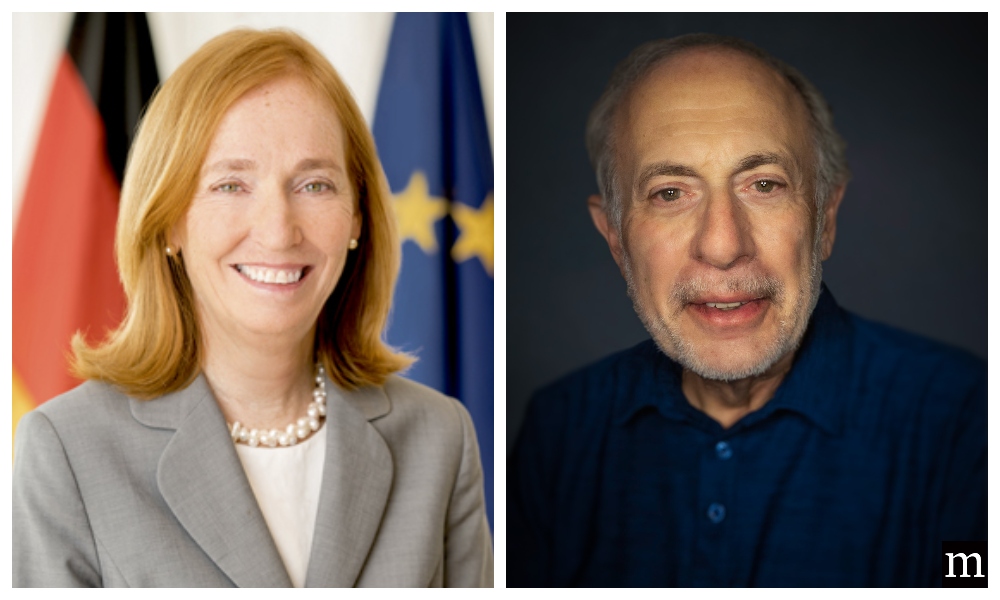
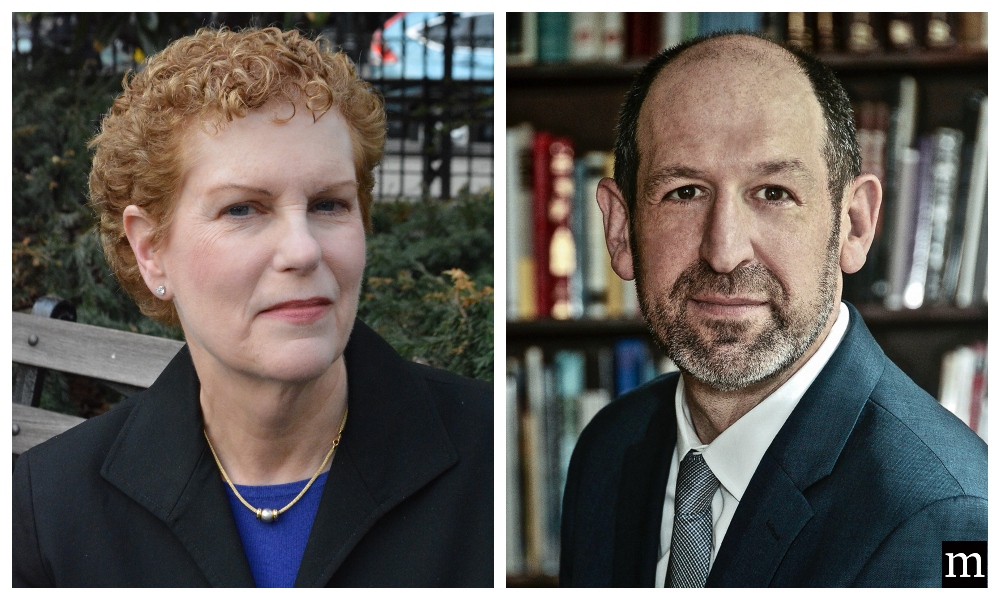
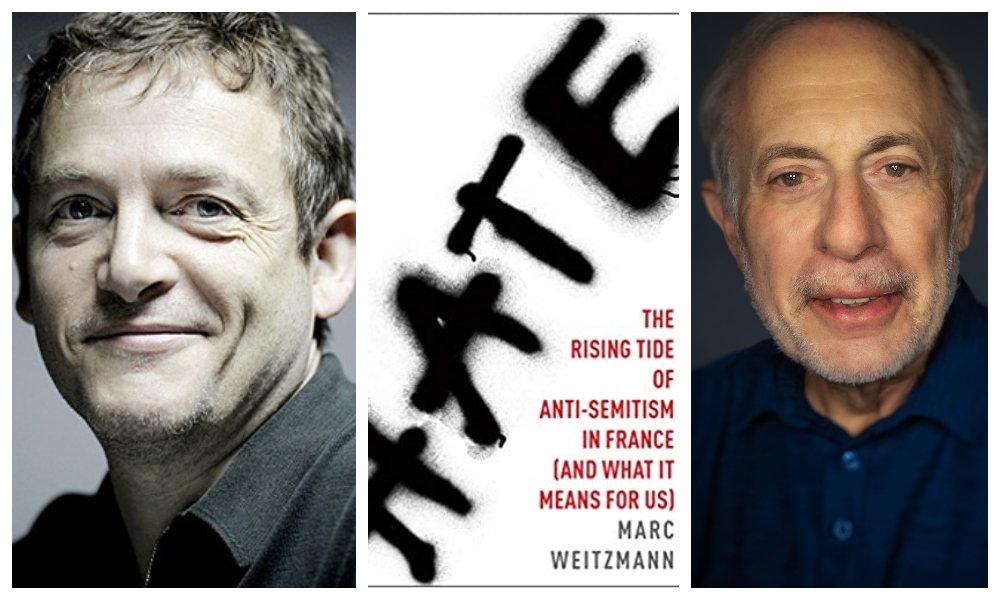
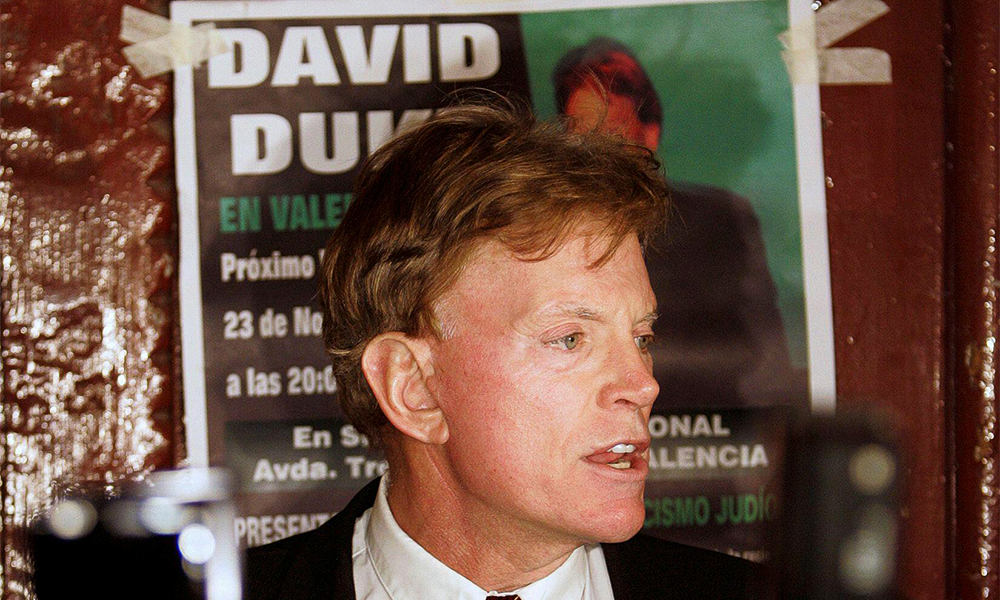

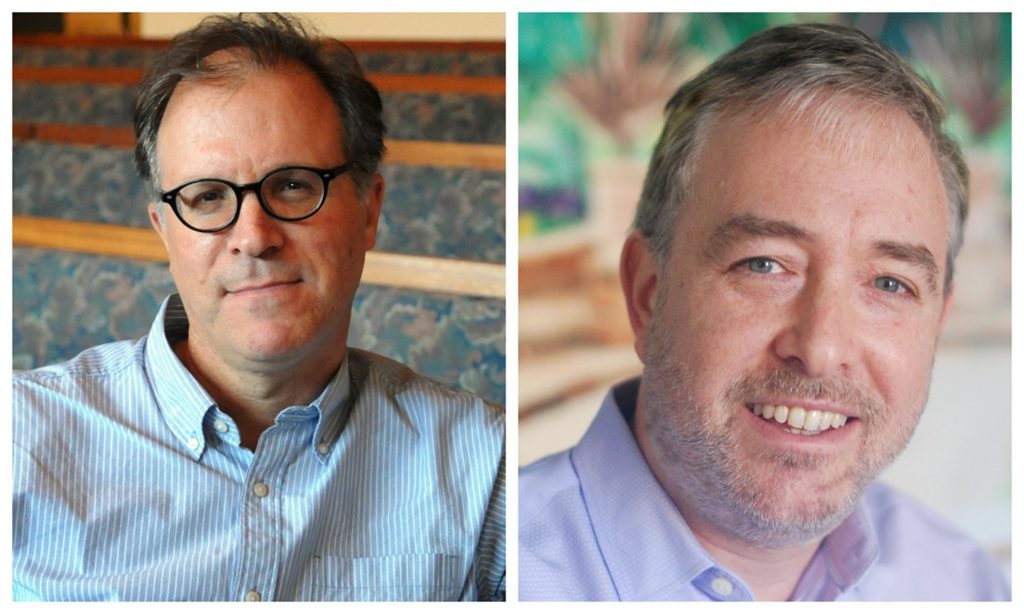
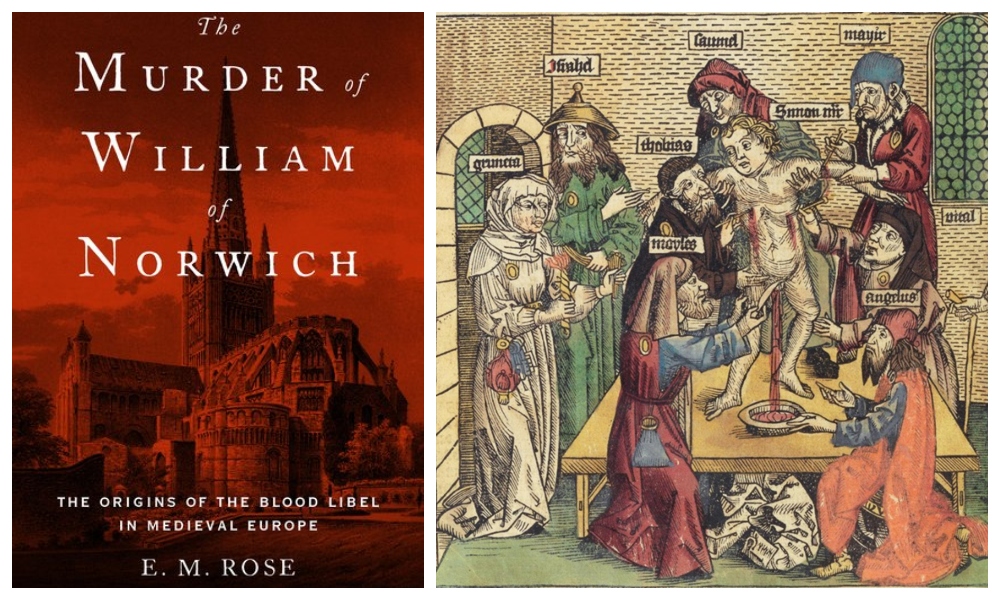


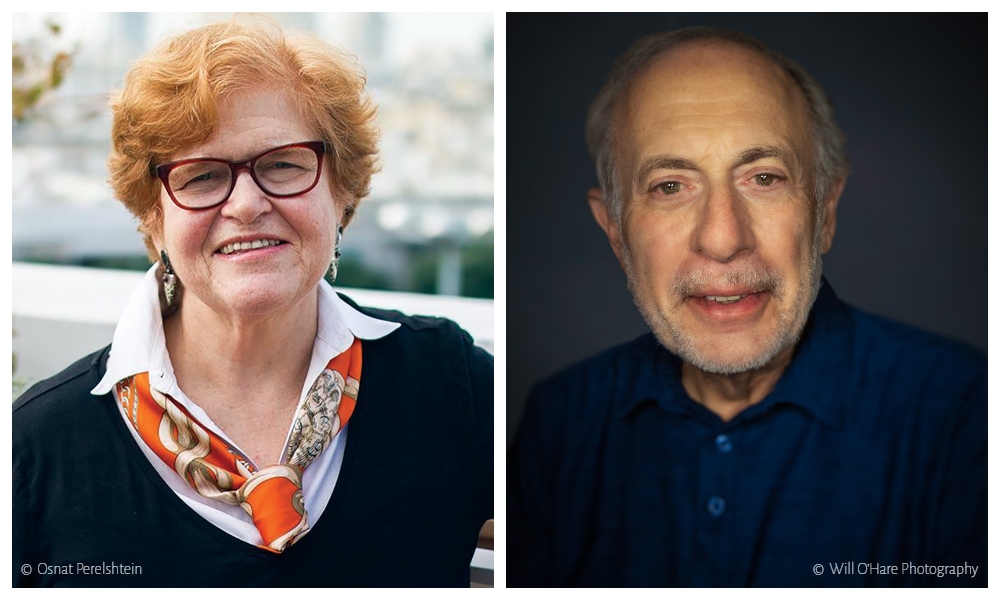

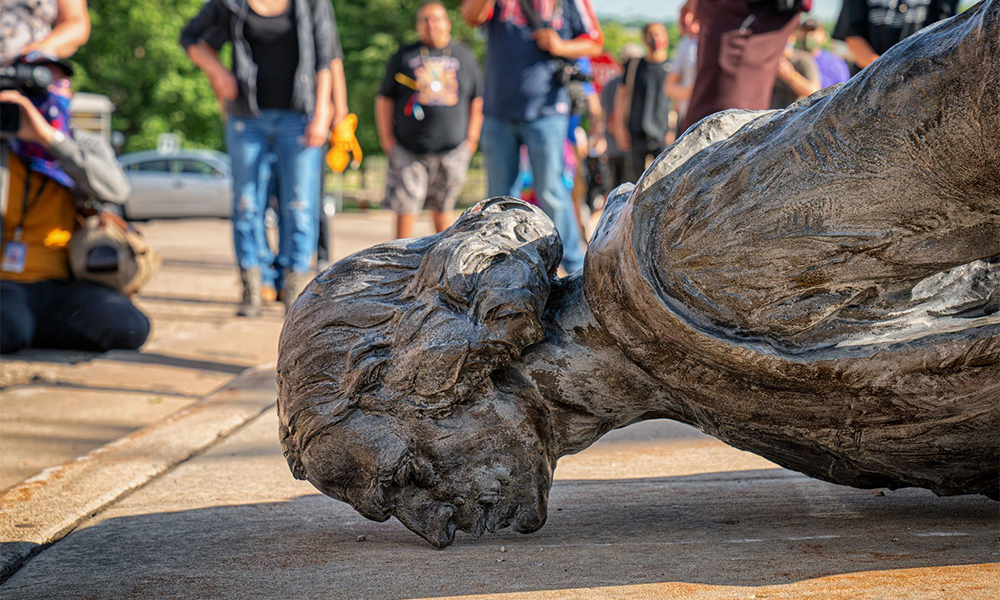
I cannot find my past Moment magazine which had an article “Is there such a thing as Jewish Fiction”. I know that Walter Mosley was one of the writers that was quoted. I wonder if there is a way for me to get the entire article on-line. So far, I have been unsuccessful.
Hope you can help me.
Thank you
Sandy Berman
I’ve emailed you a link to the article!
This was a useful thing that we were looking for here.